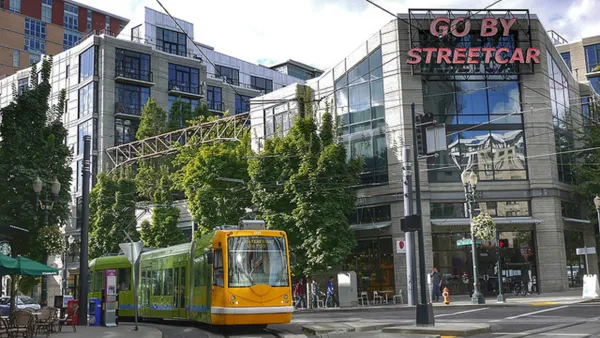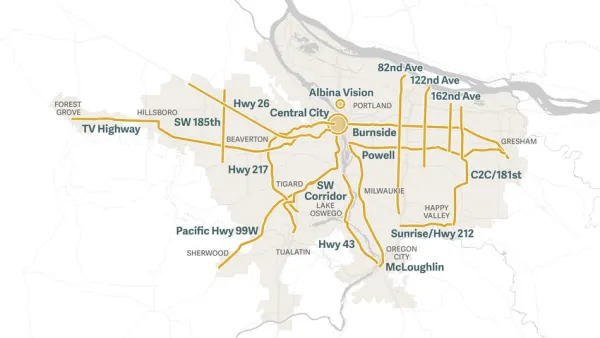Faulted for lack of attention to pedestrian and bike advocates, the Oregon Department of Transportation will soon have opportunities to redeem itself.

Andrew Theen reports on the findings of a recent audit of Oregon Department of Transportation (ODOT) planning processes for highways over the past three years. The audit, performed by the Oregon Secretary of State's office, faulted ODOT for not doing enough outreach to bike and pedestrian advocates.
The report comes as the state is expecting to enter some of the busiest construction years in decades, buoyed by the 2017 statewide transportation package, which calls for several large-scale projects in the Portland area. Those may include the contentious Rose Quarter freeway project, which is expected to cost more than $715 million, and others on key roads in the Portland area.
The Rose Quarter freeway project lost critical local support earlier this year when the citizen group Albina Vision Trust withdrew support for the plan.
ODOT will also have a chance to improve its focus on safety and engagement if voters approve a $7 billion transportation plan this November, as proposed by the Metro Council, the metropolitan planning organization for the Oregon portion of the Portland area.
FULL STORY: Oregon could better reach out to bike, pedestrian groups before construction projects, audit finds

National Parks Layoffs Will Cause Communities to Lose Billions
Thousands of essential park workers were laid off this week, just before the busy spring break season.

Retro-silient?: America’s First “Eco-burb,” The Woodlands Turns 50
A master-planned community north of Houston offers lessons on green infrastructure and resilient design, but falls short of its founder’s lofty affordability and walkability goals.

Delivering for America Plan Will Downgrade Mail Service in at Least 49.5 Percent of Zip Codes
Republican and Democrat lawmakers criticize the plan for its disproportionate negative impact on rural communities.

Test News Post 1
This is a summary

Test News Headline 46
Test for the image on the front page.

Balancing Bombs and Butterflies: How the National Guard Protects a Rare Species
The National Guard at Fort Indiantown Gap uses GIS technology and land management strategies to balance military training with conservation efforts, ensuring the survival of the rare eastern regal fritillary butterfly.
Urban Design for Planners 1: Software Tools
This six-course series explores essential urban design concepts using open source software and equips planners with the tools they need to participate fully in the urban design process.
Planning for Universal Design
Learn the tools for implementing Universal Design in planning regulations.
EMC Planning Group, Inc.
Planetizen
Planetizen
Mpact (formerly Rail~Volution)
Great Falls Development Authority, Inc.
HUDs Office of Policy Development and Research
NYU Wagner Graduate School of Public Service





























